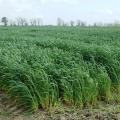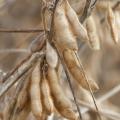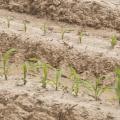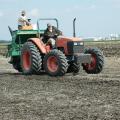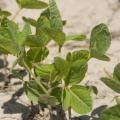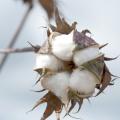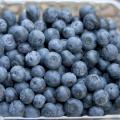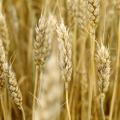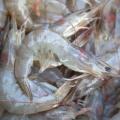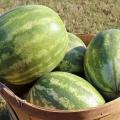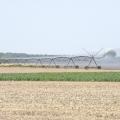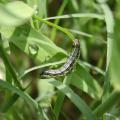Crop Report from 2012
MISSISSIPPI STATE -- A winter that quit before it got started challenged the state’s wheat crop, resulting in a below-average crop as it enters the homestretch.
Erick Larson, grain crops agronomist with the Mississippi State University Extension Service, said warm winter temperatures pushed the crop’s development ahead of schedule. Harvest could begin a few weeks early, in mid-May.
MISSISSIPPI STATE -- Crop rotation benefits and market prices remain the driving forces behind farmers’ planting decisions.
The U.S. Department of Agriculture’s prospective plantings report, released March 30, forecasts 4.67 million acres planted in nine Mississippi crops, an increase of 3 percent from total acreage in 2011.
John Michael Riley, agricultural economist with Mississippi State University’s Extension Service, said farmers probably are making their decisions to plant or not to plant soybeans and corn based on rotational needs.
MISSISSIPPI STATE -- An early strawberry season delights consumers, but growers must keep an eye on this spring’s fickle weather to protect their delicate and valuable crop.
MISSISSIPPI STATE -- A warm spring made early corn planting possible, and despite frequent rains, the statewide crop was about 90 percent planted by mid-April.
Erick Larson, grain crops agronomist with the Mississippi State University Extension Service, said corn planting should be completed soon if rains don’t halt progress.
By Dr. Rebekah Ray
Delta Research and Extension Center
STONEVILLE -- Dry conditions have allowed Mississippi rice producers to plant earlier this year than in previous years.
Nathan Buehring, rice specialist with the Mississippi State University Extension Service, said an absence of heavy spring rains put the state’s producers well ahead of schedule. About 80 to 85 percent of the state’s rice was planted by mid-April.
MISSISSIPPI STATE -- Soybeans are usually an early-planted crop, but an unseasonably warm March gave some growers a chance to get in the fields a little ahead of the typical April 1 start date.
Trent Irby, Mississippi State University Extension Service state soybean specialist, said the crop was on track at the end of April.
“Many parts of the state got planted about two weeks earlier than normal,” Irby said. “Several places remained too wet to plant until mid-April, but overall, we’re slightly ahead of schedule.”
MISSISSIPPI STATE -- Mississippi’s top agricultural commodity weathers economic storms by responding quickly to shifts in demand, and economists at Mississippi State University predict 2012 will be a year of recovery.
In 2011, Mississippi ranked fourth in the nation in broiler production, with more than 765 million birds produced on 1,478 farms. The broiler industry represented over $2.21 billion in value for the year.
MISSISSIPPI STATE -- Warm spring weather sent cotton farmers to the fields as early as the first week of April, and cotton stands are ahead of normal and looking good.
IAs of May 6, the U.S. Department of Agriculture’s Agricultural Statistics Service estimated the state’s cotton was 68 percent planted and 45 percent emerged. The five-year average for this same date has the crop just 31 percent planted and only 12 percent emerged.
MISSISSIPPI STATE -- Mississippi peanut producers should have a wonderful feeling about the 2012 crop as almost everything is going their way – including buyers from Oklahoma.
Mike Howell, state peanut specialist with the Mississippi State University Extension Service, said many of the factors favoring Mississippi’s crop this year, started last year.
MISSISSIPPI STATE – Mississippi’s blueberry growers have found their thrill this spring as ideal weather conditions resulted in abundant, high quality fruit.
“Right now, berries are coming in fast and furious in the southern half of the state,” said Wayne Porter, a Mississippi State University Extension Service agent in Lauderdale County who specializes in horticulture. “I was at a farm this morning, and they were bringing them in as fast as they could ship them out and make room for more.”
MISSISSIPPI STATE – A rapidly maturing 2012 wheat crop proved to be a timing challenge for Mississippi growers.
The state’s growers planted 480,000 acres, up from 360,000 acres the previous season. They were inspired by strong market prices and the record-average yields of 64 bushels per acre grown last year.
“Harvest is two or three weeks ahead of schedule, but we aren’t seeing exceptional yields like last year,” said Erick Larson, small grains specialist with the Mississippi State University Extension Service.
MISSISSIPPI STATE – A mild winter and unusually productive spring means Mississippi dairy farmers are enjoying good milk yield from their cows, but low prices and high input costs are making profits scarce.
Lamar Adams, dairy cattle specialist with the Mississippi State University Extension Service, said production costs are at or near record highs and milk prices are down about 21 percent from last year primarily due to high levels of domestic and global milk production.
MISSISSIPPI STATE – June’s frequent rains and cool nighttime temperatures seem custom-made for corn, and the result is optimistic farmers looking at a great crop with tremendous yield potential.
Erick Larson, grain crops agronomist with the Mississippi State University Extension Service, said the crop is as much as 10 days early and looking good.
“We’ve had a lot of favorable conditions lately that should be very beneficial and will hopefully lead to a more productive crop than we’ve seen in the last few years,” Larson said.
MISSISSIPPI STATE – The shrimp are slightly bigger, but prices are down, making this year’s season-opening in Biloxi comparable to last year’s start.
During the first two weeks of the 2012 season, 1.137 million pounds of shrimp were landed in Biloxi. In the same time in 2011, 1.124 million pounds were landed at the same port.
Shrimp season began May 30, and 210 boats went out for the opening day. To date, the bulk of the production has been medium, 36- to 40-count shrimp, a reference to the number of shrimp needed to make a pound.
MISSISSIPPI STATE – As summer temperatures soar into the triple digits, Mississippi’s sweet watermelon crop is satisfying both growers and consumers.
MISSISSIPPI STATE – Landowners debating the timing for their next timber sale should send trees to the market sooner, rather than later.
Southern pine beetle threat…
Prevention program helps landowners
MISSISSIPPI STATE – A Southern pine beetle prevention program is available to forest landowners to encourage the thinning of timber stands to promote healthier, more insect-resistant trees.
MISSISSIPPI STATE – An ideal growing season through mid-June turned into a hot and dry situation that stressed the state’s crops until widespread rains came after the Fourth of July.
The state has experienced very hot and dry weather in the last several weeks, but Mississippi State University experts remain optimistic about the overall potential.
Trent Irby, soybean specialist with the MSU Extension Service, said 90 percent of the state’s soybean crop was in the reproductive growth phase by the second week of July.
MISSISSIPPI STATE – Recent rains and irrigation have helped portions of Mississippi’s soybeans recover from June’s dry spell, but more moisture is needed to complete the season.
“We are thankful for the rain that we’ve received this growing season, and we all know it is a blessing,” said Trent Irby, Mississippi State University Extension Service soybean specialist. “But we still have several weeks to go in many areas, and additional moisture certainly will be needed to finish making the crop.”
Irby said the state’s soybean crop looks good.
MISSISSIPPI STATE – Pictures of wilting corn in the Midwest may dominate the evening news, but the 2012 drought is also shrinking livestock’s profit potential nationwide.
John Michael Riley, agricultural economist with Mississippi State University’s Extension Service, said the drought means livestock, dairy and aquaculture producers will continue to see higher feed prices.
MISSISSIPPI STATE – Despite high heat and long periods without rain, the state’s cotton is looking pretty good, although dealing with reduced acres.

